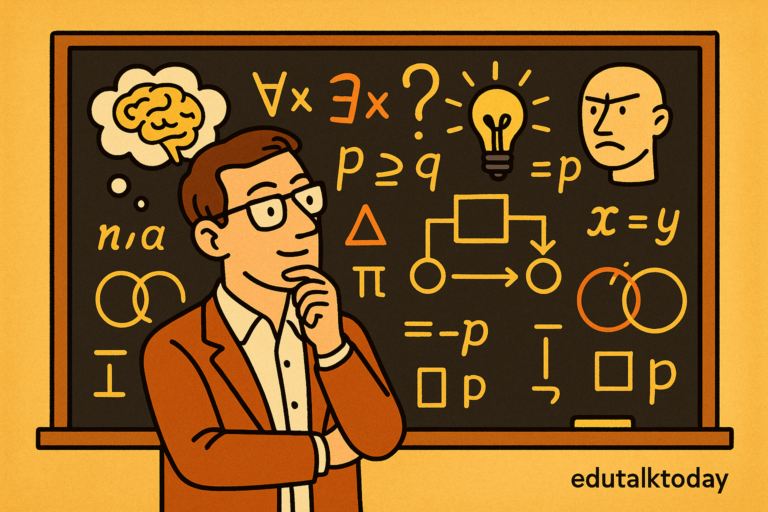Horkheimer and Adorno’s Culture Industry Theory and the Power of Mass Media

When Horkheimer and Adorno first sketched out their idea of the culture industry, they weren’t just grumpy about Hollywood churning out predictable films. They were diagnosing a profound shift in how modern societies produce and consume meaning. What strikes me—and maybe you too—is how eerily prescient their diagnosis feels in our digital era.
They saw culture being industrialized, flattened into formulas that train us to expect sameness while thinking we’re getting novelty. And honestly, once you notice this, it’s hard to unsee. Whether it’s the endless parade of superhero films or the algorithm-driven Spotify playlists that all sound vaguely familiar, the logic of sameness wrapped in the appearance of choice is everywhere.
What excites me is pushing this discussion further: if the culture industry is still with us, how exactly has it mutated in today’s media landscape, and what does that say about our supposed autonomy as cultural consumers?
Where the Idea Came From
Enlightenment turning on itself
Here’s something I’ve always found fascinating: Horkheimer and Adorno weren’t just talking about movies or radio. They were embedding their argument in a much larger philosophical puzzle—the paradox of Enlightenment.
The very project that promised rationality, freedom, and emancipation ended up creating the conditions for domination in new forms. They framed this most starkly in Dialectic of Enlightenment.
What looks like progress (technological advances, cultural accessibility) can, under capitalism, become another way of consolidating control. Mass culture wasn’t liberating; it was disciplining.
That’s a pretty bold claim, but it makes sense if you think about how reproducibility, efficiency, and calculability—the hallmarks of industrial production—slipped into cultural life.
For Adorno, it was no accident that a jazz record or a Hollywood film felt like a standardized product rolling off a factory line. Culture had stopped being about aesthetic disruption or human expression. Instead, it became another commodity—smooth, predictable, and endlessly replicable.
The Marxist edge
This is where the Marxist underpinnings really matter. The commodification of culture wasn’t just some unfortunate accident; it was baked into capitalism’s DNA. When culture becomes a commodity, its exchange value overshadows its use value. People stop asking what a work does (Does it make me think? Challenge me? Alter my perception?) and instead consume it like any other market good.
The real kicker is that the system sells us the illusion of choice. You feel like you’ve picked your favorite pop star or your preferred movie genre, but really, you’re moving within a narrow field of options designed to keep you buying.
I think of it like walking into a supermarket with 50 different brands of cereal. Sure, the packaging looks different, but scratch beneath the surface and it’s basically corn, sugar, and preservatives in slightly varied combinations.
That’s pseudo-choice, not freedom.
Culture as a tool of domination
Horkheimer and Adorno pushed this further by linking culture directly to ideology. They weren’t saying that propaganda was simply shoved down people’s throats (though that happens too). It’s subtler and scarier than that. By saturating everyday life with formulaic entertainment, the culture industry lulls people into passivity. Critical thought is dulled because the very structure of cultural products discourages it.
Think about the laugh track in sitcoms—it doesn’t just accompany the joke, it tells you when to laugh, shaping the rhythm of your response. Or consider streaming platforms today: the autoplay feature gently nudges you into the next episode, training you to accept continuous consumption without pause for reflection.
What always amazes me here is how much this anticipates later work in media theory. Foucault would go on to describe disciplinary power, Althusser wrote about ideological state apparatuses, and Debord unpacked the society of the spectacle—but Adorno and Horkheimer were already hinting at this terrain.
Why this still matters
Now, I know some experts push back, arguing that Adorno and Horkheimer underestimated audience agency. Fair point. People don’t just swallow culture whole; they remix, reinterpret, resist.
But I’d argue that their framework remains vital precisely because it highlights the structural pressures shaping cultural life. When TikTok trends spread globally in days or when Marvel films dominate the global box office, the mechanisms look startlingly similar to what they were describing in the 1940s.
And here’s where it gets juicy: we can trace the genealogy of today’s “attention economy” directly back to their insights. Platforms like YouTube or Netflix thrive not on producing culture per se, but on capturing attention and converting it into profit. That’s the culture industry’s logic, turbocharged by algorithms. And if you think about it, the personalization of content today is just a more advanced form of pseudo-individualization—your Netflix homepage looks “yours,” but it’s still shaped by standardized categories and predictive models.
A concrete example
Take Spotify’s “Discover Weekly.” It feels like the platform knows you intimately, serving up tracks perfectly tuned to your taste. But in reality, it’s funneling you through preexisting genre categories, favoring artists and labels who can play the algorithmic game. You feel like you’re on a unique journey, but really, you’re walking along carefully paved, market-driven roads. That’s classic culture industry logic: the promise of individuality masking deeper standardization.
What I find delightful (in a dark way) is how perfectly this maps onto Adorno’s worries about jazz back in the day. He thought jazz improvisation was fake freedom—variation within rigid formulas. Today, Spotify gives us digital improvisation: the playlist feels unique, but the underlying structure is rigidly formulaic. Different medium, same trick.
Looking ahead
So, when we revisit Horkheimer and Adorno’s theory, it’s not about nostalgia for a pre-industrial “authentic” culture. That ship has sailed. It’s about recognizing the continuity of cultural commodification, from radio serials to TikTok dances, and asking what it does to our capacity for critical thought. If anything, their analysis invites us to think harder about the subtle ways power gets baked into entertainment—and whether we’re really as free as the culture industry wants us to believe.
How the Culture Industry Shapes Us
Standardization everywhere
One of the most striking features of the culture industry, at least in Adorno and Horkheimer’s telling, is its reliance on standardization. Cultural products get produced like cars on an assembly line—efficiently, predictably, and with minimal risk. You know the beats of a rom-com before you even buy the ticket: meet-cute, conflict, reconciliation, happy ending. The same goes for pop songs, where verse–chorus–verse–bridge–chorus dominates. What fascinates me is how we’ve normalized this. Standardization isn’t just tolerated—it’s celebrated. Audiences expect certain story arcs or chord progressions because they’re comforting. And yet, comfort is the very thing that disarms critical resistance.
Think about Marvel films. The CGI battles, the quippy humor, the post-credit teasers—they’re familiar rituals. Even the deviations (a darker ending, a surprising character death) operate within a predictable template. Formula rules, variation is cosmetic. Adorno would argue this isn’t just laziness; it’s how cultural production ensures profitability by minimizing surprise and maximizing audience loyalty.
The trick of pseudo-individualization
Now, here’s where things get sneaky. If culture were pure repetition, we’d get bored. So the industry sprinkles in what Adorno called pseudo-individualization—the illusion of difference within sameness. It’s the new flavor of Coke, the limited-edition sneaker, or that streaming show that claims to “break the mold” while still checking every conventional box.
I often think of Spotify’s personalized playlists here. Your “Discover Weekly” feels intimate, like your taste has been carefully catered to. But in truth, the algorithm sorts you into buckets—your supposed uniqueness is just another market segmentation. You and millions of others get nearly identical “personalized” experiences. That’s the genius of pseudo-individualization: it convinces you you’re an active chooser when you’re actually walking along pre-set tracks.
Passive consumption as training
Another mechanism that fascinates me is how the culture industry encourages passivity. If you’ve ever lost an entire Saturday to Netflix autoplay, you know what I mean. The platform removes friction; you don’t have to decide whether to keep watching. It’s done for you. The effect is subtle but powerful: you’re trained to accept whatever comes next, to consume without pause.
This isn’t new, of course. Radio soaps in the 1940s were designed to roll seamlessly from one melodramatic episode to another. The laugh track in sitcoms tells you when to laugh, guiding your emotional response. These built-in cues prevent moments of disruption or distance—the very conditions necessary for critical thought. And if audiences don’t pause, they don’t resist.
Emotional manipulation at scale
Then there’s emotional engineering. Cultural products don’t just entertain; they manage our affect. A swelling soundtrack primes us to feel moved; a cliffhanger ensures we return next week; a sentimental ad makes us associate happiness with a product. This isn’t accidental—it’s the careful design of emotional rhythms that sync with consumption cycles.
I see this most clearly in TikTok. The short-video format compresses emotional highs and lows into a rapid-fire sequence: laughter, outrage, sympathy, desire—all in a matter of minutes. The intensity keeps users hooked, but it also leaves little room for reflection. The platform doesn’t want you to sit with one feeling too long—it wants you scrolling. Adorno might not have imagined TikTok, but his critique of commodified affect nails the phenomenon.
Selling through entertainment
Finally, we can’t ignore the integration of advertising and entertainment. In the culture industry, there’s no real boundary between art and commerce. Ads are entertainment; entertainment is an ad. Influencers embody this perfectly: their lifestyle content is simultaneously personal expression and product placement. You’re not just watching a vlog; you’re participating in a marketing campaign.
This blurring is more than just irritating—it makes resistance harder. If every cultural moment is also a commodity transaction, how do we distinguish genuine expression from market-driven messaging? The point, I think, is that we can’t. And that’s the culture industry’s victory: it colonizes the very space where critique might once have taken root.
Why It Still Matters Today
From radio to algorithms
When I re-read Horkheimer and Adorno, what strikes me isn’t their pessimism (though they had plenty of that). It’s how their framework helps decode today’s algorithmic media ecosystem. Replace “radio” with “Instagram” and “Hollywood” with “Netflix,” and the dynamics hold up shockingly well. Standardization? Check. Pseudo-individualization? Every recommendation engine does this. Emotional manipulation? Scroll through Twitter during a breaking news cycle.
This continuity tells us something important: the logic of the culture industry isn’t tied to one medium. It mutates and adapts. What’s changed isn’t the mechanism but the scale and precision. With digital platforms, the process is faster, more granular, and more intimate than anything Adorno could’ve imagined.
The personalization paradox
Here’s where it gets interesting. Digital culture thrives on the rhetoric of personalization—“your” feed, “your” playlist, “your” content. But that personalization is itself a form of control. By serving you what you’re most likely to engage with, algorithms reinforce preferences, create filter bubbles, and keep you cycling through a predictable range of content.
Think about YouTube’s recommendation system. Watch one video about conspiracy theories and suddenly you’re in a rabbit hole of increasingly extreme content. This isn’t accidental; it’s the outcome of a system designed to maximize engagement. The illusion of agency hides the reality of manipulation.
Globalization of sameness
The globalization of culture takes this to another level. Platforms like Netflix release content worldwide, shaping taste across vastly different contexts. Sure, local adaptations exist (think of the surge in Korean dramas), but the underlying structure—the cliffhanger arcs, the binge-worthy pacing—is global. What we’re seeing is the standardization of cultural form on a planetary scale.
I’m always struck by how quickly a Netflix show can become a global meme. Remember Squid Game? On the one hand, it’s deeply Korean, with themes rooted in local economic anxieties. On the other, its structure—serialized cliffhangers, vivid spectacle—fits perfectly into the culture industry’s global machinery. That tension between local flavor and standardized form is exactly what Adorno and Horkheimer help us make sense of.
The politics of attention
If the old culture industry was about selling tickets or radios, the new one is about selling attention. Our time and focus are the raw materials extracted, commodified, and sold to advertisers. In that sense, the culture industry today isn’t just producing cultural commodities—it’s producing us as commodities. Our clicks, likes, and watch histories are packaged into data profiles.
This reframes the question of power. It’s not just about ideology shaping our thoughts. It’s about platforms shaping our habits, desires, and even sleep cycles. Ever notice how notifications arrive at just the right time to pull you back in? That’s behavioral conditioning on a mass scale.
Is resistance possible?
Now, here’s the million-dollar question: is resistance still possible? Adorno and Horkheimer were pretty bleak on this. They saw culture’s critical edge blunted by commodification. And yet, I think cracks exist. Memes, for example, can be both deeply commodified and deeply subversive. Fan communities sometimes repurpose corporate media in ways that undermine its intended message. Independent creators still find ways to circulate disruptive content, even if the platforms quickly co-opt it.
But here’s the catch: resistance often gets commodified too. Think of Che Guevara T-shirts or punk aesthetics sold in high-end fashion stores. What begins as critique quickly becomes another product. That cycle of appropriation might be the most enduring legacy of the culture industry.
Why revisit the theory now
So why revisit Adorno and Horkheimer in 2025? Because their framework reminds us that media isn’t neutral. Behind every playlist, every feed, every binge-worthy show lies an economic logic shaping what we see and how we act. And while technologies have changed, the power dynamics they diagnosed remain strikingly intact.
Their theory doesn’t just help us analyze; it also forces us to stay vigilant. If we buy into the illusion that we’re freely choosing, we miss the structural constraints. And if we ignore those constraints, we risk becoming passive consumers in a system that thrives precisely on our passivity.
Final Thoughts
I don’t think Horkheimer and Adorno give us a roadmap out of the culture industry, but they do hand us a powerful diagnostic tool. Once you start seeing standardization, pseudo-individualization, and emotional engineering at work, you can’t unsee it. And that awareness matters. It pushes us to ask tougher questions about autonomy, resistance, and the price of convenience.
The culture industry might have evolved into algorithmic feeds and global streaming platforms, but the core dynamics haven’t gone anywhere. If anything, they’ve gotten sharper. And maybe that’s the takeaway: we don’t escape the culture industry by pretending it’s not there—we engage with it critically, refusing to let its seamless entertainment lull us into forgetting that culture is always political, always contested, and always worth fighting over.





